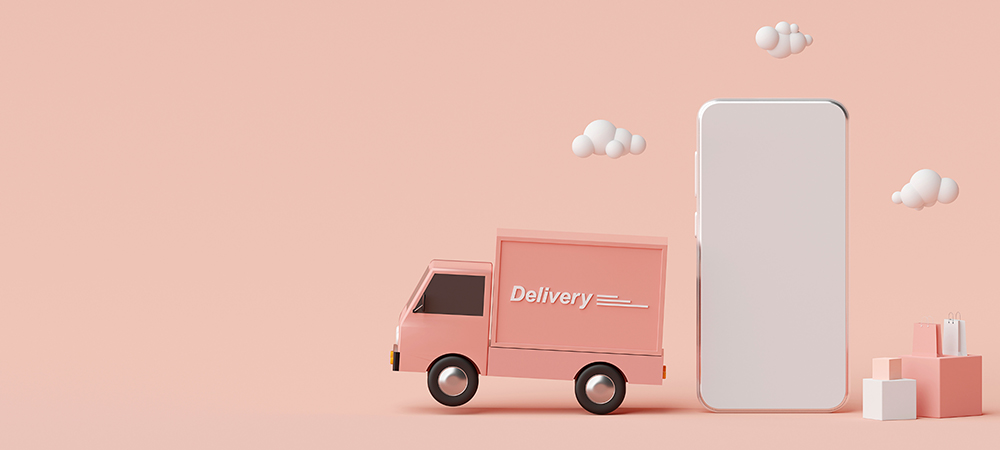Josh Garnham, Co-founder at Packfleet, tells us how the company has built Pathfinder, its in-house routing platform, that powers all of its deliveries to drive towards a more efficient and sustainable delivery alternative.

A sustainability revolution in e-commerce is turning an increasingly old-fashioned delivery model on its head. Now, an army of zero-emission vehicles directed by AI-enhanced tech is empowering customers to pick delivery windows, redirect parcels in real-time, and provide specific information to drivers such as ‘sleeping baby, please don’t ring the doorbell’.
These adaptations are making online purchases close to frictionless.
While convenient, it puts strain on the environment and those living in built-up areas. In cities, petrol and diesel delivery fleets contribute to congestion as well as noise and air pollution.
It’s no surprise that London has a high demand for e-commerce, with a plethora of thriving businesses and people wanting quick deliveries, but Londoners are also environmentally conscious. With almost half (46%) saying they’d choose a retailer that uses electric vans for delivery over a firm using diesel or petrol power, the question is how do we meet the demand for timely deliveries sustainably?
Tech first, logistics second
When we first started Packfleet, we wanted to be known as a tech company first, and an all-electric courier second. In an industry where the incumbents are slow, immovable beasts with complex, rigid backend software, we’re able to be agile and reactive.
Whenever we make a decision, we consider two things: how does this help us offer sustainable deliveries and does it compromise our customer experience? These are the two most important things to Packfleet, and building our tech stack from the ground up means we’ve been able to drive towards a more efficient and sustainable delivery alternative.
We wanted to use technology to provide a solution to polluting deliveries that arrive late, or at times not at all. We had to innovate and got to work building our in-house routing platform that powers all of our deliveries, known today as Pathfinder.
Cracking the routing conundrum
Routing has long been a formidable challenge. Often couriers opt to provide their drivers with a list of addresses for them to figure out the route themselves. While some drivers may have incredible local knowledge (akin to a London black cabbie), it can be difficult to consider outside factors like roadworks or busy traffic, and makes it difficult for customers to change the delivery address or time.
It’s understandable why some couriers do it this way – routing is infinitely complex. If two vans make deliveries to 20 stops, the number of potential routes is 2.5 quintillion – a number so big it has 17 zeros in it! However, technology can empower couriers to navigate all of these possibilities in mere seconds, and put drivers on the route that’s the most efficient and sustainable, updating in real-time if, for example, a customer changes their delivery address.
We built Pathfinder with these applications in mind, and the platform is based on the latest research on vehicle routing, mapping and AI. AI is built into our software and is used to forecast the number of deliveries for our small and medium merchants. We’re also able to review historical data and consider seasonality and estimates to accurately predict the number of parcels due to be delivered well in advance.
Incremental gains
Putting technology first also comes with a lot of long-term benefits. Over the past three years, we’ve gathered a large bank of data on specific locations across London.
When drivers visit a location, they’re able to note down the best places to park or how to access a building, and can flag if the address we have on file is incorrect. This is then fed into Pathfinder and is used to improve future deliveries, and over time you have a wealth of data that makes the driver’s job easier.
With AI, we can compare a driver’s delivery photo to all the previous pictures taken at the same address. If they’ve dropped a parcel off at the wrong location, drivers will know before they’ve even left the doorstep.
Using an electric fleet, we’re also able to use technology to monitor van charge levels, and accurately see how far along their route our drivers are – ensuring they’re on the most efficient journey.
For the customers we’re delivering to, this means they get parcel updates with delivery predictions to the minute. It keeps delivery expectations manageable, and drivers aren’t forced to cut corners to make tight delivery windows.
Happy drivers, happy customers
As we know, drivers are the key to any logistics business, and technology can help make their lives easier at every step of the delivery process.
On top of Pathfinder, we’ve specifically developed an app for our drivers that allows them to check in for their shift, see their route and scan parcels from one place. It even guides our drivers to load their vans for optimum delivery, something that is often overlooked at legacy couriers.
It’s these small quality-of-life features that make all the difference. A member of our engineering team goes out for a ride with the drivers every few weeks, meaning the people who build the tech can see first-hand what’s working and what isn’t.
As our technology is owned by us end-to-end, any issues can be addressed and adaptations made to the software in real-time. The technology is forever evolving as we seek to provide the best service possible.
Technology is a powerful catalyst and has allowed us to drastically improve last-mile delivery standards for our drivers, merchants and their customers. We’ve been able to achieve a 0.1% parcel failure rate when compared with the industry standard of up to 5%, and we can generate logically efficient routes for thousands of stops within minutes.
As the push towards net zero intensifies, the industry desperately needs to figure out how to provide sustainable deliveries across the board. Tech-led businesses should lead from the front, and inspire others to innovate and build greener delivery businesses that don’t cost the environment. The future of sustainable courier services is already here, and it’s tech-led.


